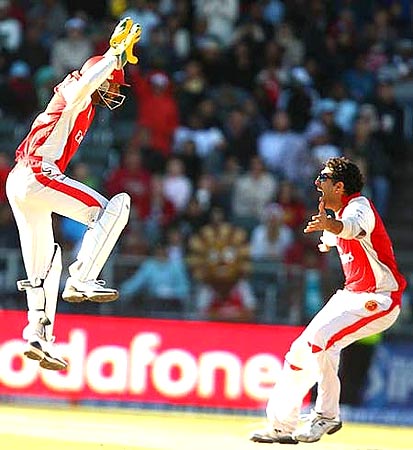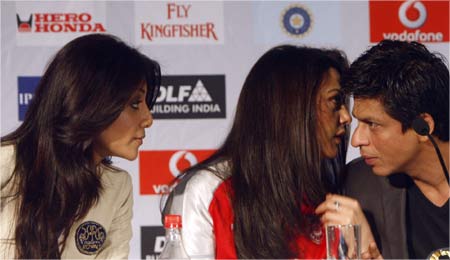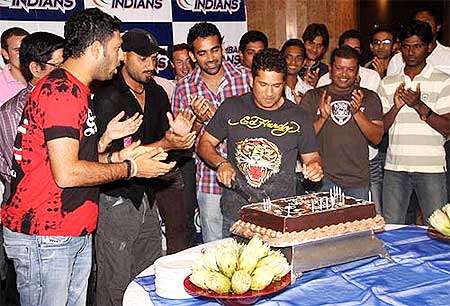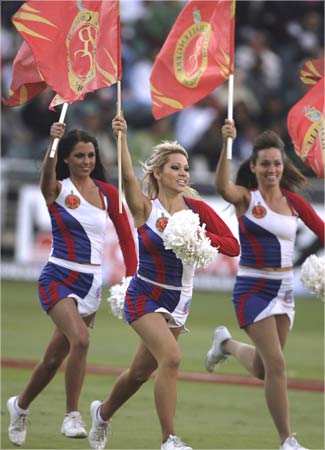Photographs: Reuters Shobhana Subramanian
There was instant buy-in. Multi Screen Media paid no less than $1.2 billion (around Rs 5,800 crore) for ten-year television broadcast rights.
Advertising revenues generated by IPL 2, held in April 2009, were reported to be 50 per cent higher than IPL 1.
How IPL became a billion dollar brand
Image: Members of the Rajasthan Royals cricket team wave to crowds during a street parade in Cape Town by teams competing in the Indian Premier League T20 cricket tournament.Photographs: Mike Hutchings/Reuters
Where IPL has scored is the simplicity of the format - eight teams, each a franchise, play against each other in matches that start at 6.30 or 7 pm and last just under four hours.
While almost all of India's top cricketers have found a place in the teams, the big money has lured international players as well.
How IPL became a billion dollar brand
Image: Bollywood stars Shilpa Shetty, Preity Zinta and ShahRukh Khan (L-R) confer during a news conference of the Indian Premier League T20 cricket tournament in Cape Town.Photographs: Mike Hutchings/Reuters
Film stars have been roped in to add glamour - Akshay Kumar for Delhi Daredevils, Hrithik Roshan for Mumbai Indians and Katrina Kaif for Royal Challengers Bangalore. Some film stars, of course, have invested in the franchises: Shah Rukh Khan in Kolkata Knight Riders, Preity Zinta in Kings XI Punjab and Shilpa Shetty in Rajasthan Royals.
India may not have had the club culture necessary for such a format, but the concept was a hit from day one. Despite being held outside India, with more afternoon matches and alongside the general elections, IPL 2 attracted an audience of 90 million, which was more than IPL 1.
How IPL became a billion dollar brand
Image: Sachin Tendulkar's birthday party.Photographs: Reuters
That's important because the primary revenue source for IPL teams is broadcasting rights - 40 per cent. That's unlike the western sports leagues where gate receipts and match day sales hold the key.
Team owners, of course, have forked out large sums to buy teams - Mukesh Ambani paid nearly $112 million (Rs 545.14 crore) for Mumbai Indians, while Vijay Mallya coughed up an equivalent sum for Royal Challengers Bangalore.
How IPL became a billion dollar brand
Image: Bangalore Royal Challengers dancers entertain fans during the 2009 Indian Premier League T20 cricket tournament between the Mumbai Indians and the Bangalore Royal Challengers.Photographs: Siphiwe Sibeko/Reuters
Brands that Shah Rukh Khan endorsed, like Nokia, were naturally keen to back his team, Kolkata Knight Riders.
The franchises aren't doing badly either. A couple of them are believed to have broken even. Indeed, all teams should turn profitable in the next two or three years.
Some owners have already monetised their franchises. Emerging Media, which had paid $67 million (Rs 326 crore) for the Rajasthan Royals team, sold 11.7 per cent to Raj Kundra and Shilpa Shetty for $15.4 million (Rs 74.8 crore), valuing the firm at $132 million (Rs 641 crore).







article